Simulation: a key strategy for cost reduction and sustainability enhancement.

In pursuing genuine sustainability, enterprises must recognize the imperative to achieve long-term profitability, rather than mere surface compliance. Accordingly, it is essential to adopt, as part of best corporate practices, a consistent cost reduction and sustainability strategy along with other corporate initiatives. These may include optimizing resource use, implementing environmentally and economically sustainable processes, and adopting waste and energy reduction policies. Only by integrating these practices can we effectively track expenses and make the best use of corporate assets.
With a view to real sustainability (and not just on paper), it is increasingly important for enterprises to identify themselves as long-term sustainable entities.
Amid global market fluctuations, cost volatility has a direct impact on corporate expenses. In such a complex industrial scenario (especially in manufacturing and logistics), success depends on minimizing waste and maximizing profitability. The digital transition is key to mitigating these challenges by integrating smart manufacturing solutions, complicit with incentives for the development of smart factories, influenced by the principles of Industry 4.0 and Industry 5.0.
In all these cases, technology steps in to find possible solutions and improving operational efficiency.
Therefore, to truly lighten their footprint on the environment and society, as well as their own profits, companies must adopt practices that prioritize sustainability. However, it is clear that many European companies have yet to appreciate how technology can facilitate this effort.
Digitizing business practices and minimizing the related physical activities inherently leads to cost savings and progress toward sustainability.
Regarding our case, the Flexcon business case, within decades of working experience, process simulation has proven to be an iconic example of this phenomenon.
Simulation emerges as a powerful tool in the quest for sustainability and cost reduction. By accurately modeling various scenarios, companies can identify inefficiencies and optimize resource utilization without the need for time-consuming physical experimentation, as was the case in the past.
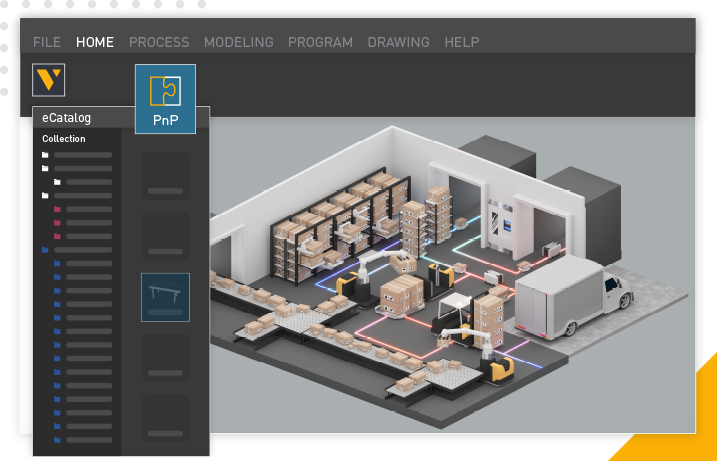
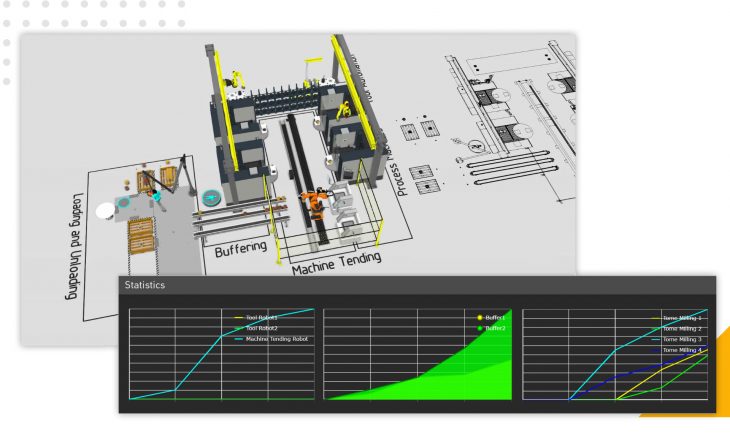
Digitization and key cost reduction strategies: the spotlight on virtual simulation
According to the 2023 Technology Leadership Deloitte study, companies should intensify the use of digital technologies to implement virtuous practices in all business processes.
Partly due to implementations with AI and state-of-the-art technologies, simulation comes to the rescue in many areas, with different goals and operational tactics.
For example, to achieve greater supply chain visibility, improve productivity, monitor and optimize energy costs (including in the context of new Industry 5.0 directives), and strengthen connectivity with stakeholders and consumers.
The following are a few examples.
Supply chain optimization
- Material flow simulation: Simulation allows the flow of materials throughout the supply chain to be modeled and analyzed in the perspective of a cost reduction strategy. This helps identify potential delays, inefficiencies or trouble spots that could compromise the supply chain.
- Production planning: Using advanced simulation models, companies can run predictive simulations based on future demand. This allows them to optimize production and supply planning, avoiding situations of overproduction or inventory shortages.
- Stock management: Logistic simulation enables “what-if” scenarios to be run to determine the optimal stock level. This helps minimize excess inventory while reducing associated costs.
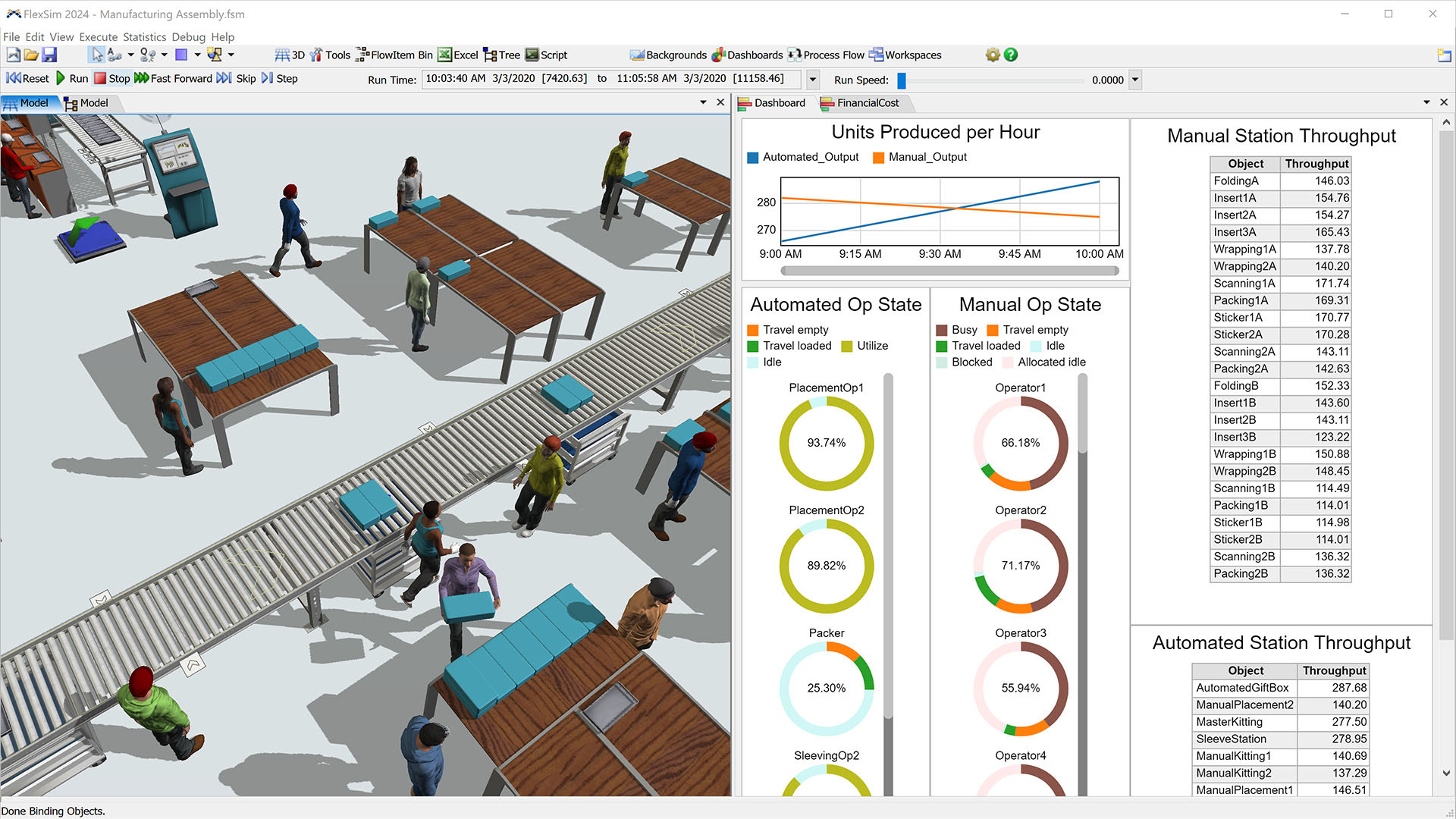
Enhancement of productivity
- Production line simulation: by modeling the entire production line, inefficiencies, downtime and bottlenecks can be identified. This allows targeted improvements to be made to optimize workflow, reaching kpi and thus increasing overall productivity.
- Production planning: simulation allows different production planning strategies to be tested. This includes evaluating optimal shifts, resource allocation and priority management, helping to maximize operational efficiency.
Reducing the impact of energy costs
- Process optimization: through virtual simulation, the company is able to detect the inefficiencies within the production process. Consequently, it can develop strategies to reduce energy consumption, which helps to contain the impact of energy costs on production and in operations in general.
- Risk and opportunity Management: companies can use virtual simulation to assess the real-world impacts of energy price fluctuations. They can also develop action plans to both mitigate risks and to capitalize on opportunities in the global energy market.
- Additional modules to simulate power consumption: in addition to basic functionality, simulation software offers additional modules (add-ons) specifically designed to simulate and optimize energy consumption, enabling companies to further improve energy management and reduce energy-related costs.
Strengthening Connectivity
- Digital connectivity simulation: simulation models enable the assessment of the impact of technology solutions such as the Internet of Things (IoT) and cloud connectivity on supply chain and operations. This encourages greater interaction between devices and systems.
- Virtual collaboration: simulation can facilitate collaboration with suppliers, partners and other stakeholders. For instance, by providing hands-on visualization of processes, which facilitates meaningful understanding by all stakeholders. In a participatory session, parties can examine the flow of activities together and discuss specific details with more clarity than a purely speculative description. Simulation also facilitates standardized benchmark conditions, ensuring that all involved parties encounter the same variables and circumstances. This eliminates possible bias in the results and provides a fair basis for comparison.
Reduced footprint
- Reduction of those costs that are a result of space utilization: reducing the space occupied by facilities can lead to a reduction in costs associated with renting or purchasing land, as well as a reduction in operating costs associated with the management and maintenance of the facilities.
- Impact on process speed: efficiencies resulting from more compact layouts can lead to higher productivity and reduced production costs. Therefore, integrating footprint reduction as part of a cost reduction strategy can contribute significantly to overall business efficiency improvement.
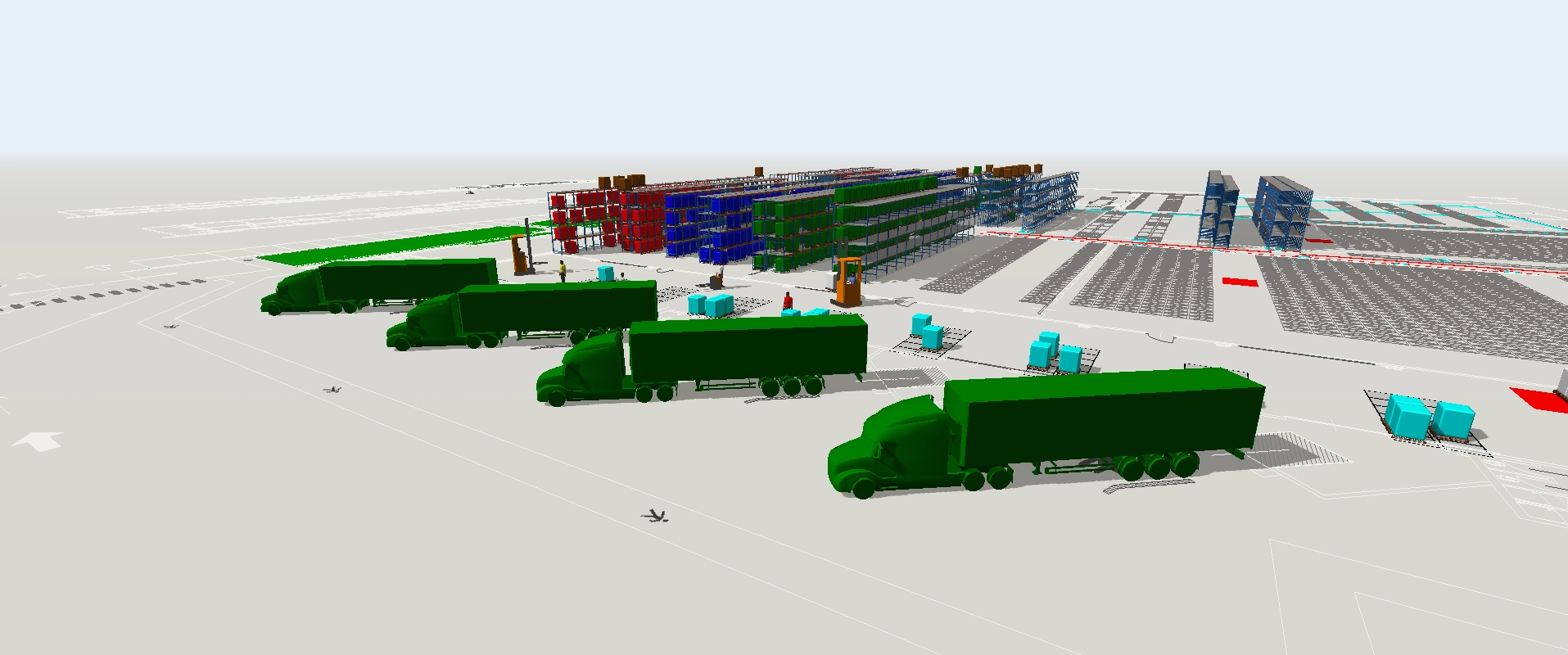
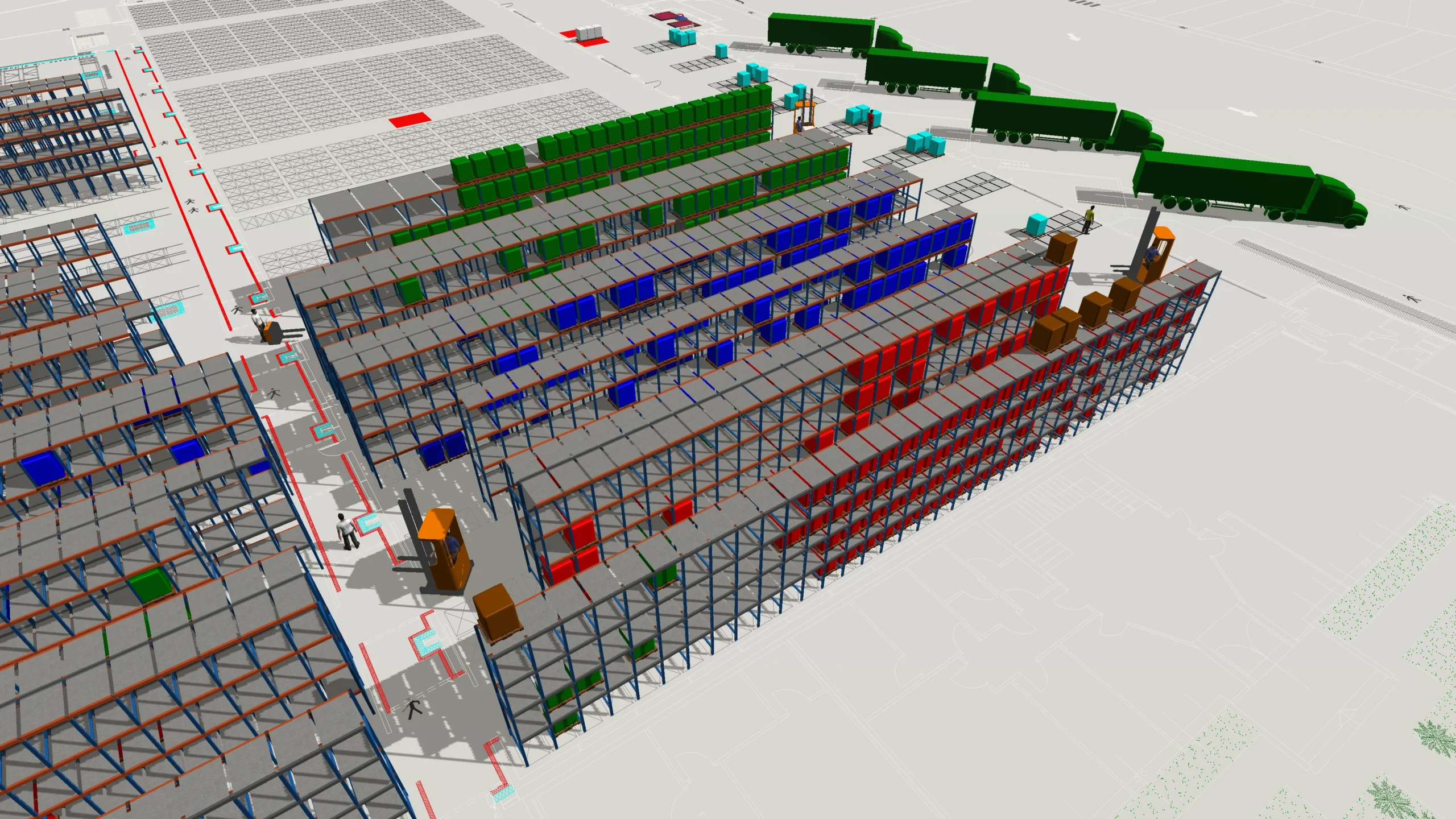
In pursuit of cost reduction, it is critical to adopt advanced practices. This will not only enable more efficient operations, but also spur innovation and growth. Among the many best practices available, process simulation emerges as a key enabler for thoroughly understanding each stage of production. This is just the first step toward smarter, quality-driven cost management.
Errors to avoid
People often misunderstand the concept of “cost reduction. It is crucial to be aware of the obstacles that could undermine our efforts. Cost reduction is not synonymous with making indiscriminate cuts, which can instead lead to compromises on quality and efficiency in the long run.
The true essence of cost reduction lies in optimization, not sacrifice. It involves a thorough analysis of business processes. The aim being to identify inefficiencies and waste to improve overall efficiency without compromising quality. A cost reduction strategy, if properly undertaken, becomes a means to achieve smarter resource management. In addition it promotes the long-term sustainability of the company.
We briefly present here an overview of the most common mistakes to avoid. The path to real efficiency must be as smooth as possible.
- Linear cuts: making indiscriminate cuts without careful analysis can damage product quality and reduce customer satisfaction. Budget reductions should be strategic, focused on non-vital areas, and supported by a detailed assessment of the impact on critical processes.
- Ignoring emerging technologies: resisting the adoption of innovative technologies can lead to a competitive gap. Investing in advanced solutions, such as automation and IoT, not only improves operational efficiency but can generate long-term returns, ensuring competitiveness in the changing industrial landscape.
- Underestimating employee engagement: Ignoring the importance of employee engagement can generate a negative work climate. Active staff involvement is essential to implement effective changes, improve productivity and promote a positive work environment.
- Failure to analyze risks: Ignoring risk assessment can result in unforeseen costs. Careful planning, including an analysis of potential risks, prevents future problems. It also ensures that we make decisions as a result of accurate up-to-date data.
- Failure to update knowledge and technologies: Ignoring the importance of keeping knowledge and technologies up-to-date can have significant consequences. We live in an ever-changing international landscape. Gas and energy costs are rising, and knowing available alternatives is essential. Maintaining a constant focus on calls and opportunities to acquire tax credits or other forms of credit is critical. In addition, knowledge and integration of simulation as a business technology asset can optimize processes and reduce costs efficiently.
Process simulation is a familiar practice for many, a game-changer for everyone in the manufacturing community.
In pursuit of an effective cost reduction strategy, the integration of process simulation is a key requirement. However, it is pivotal to avoid mistakes and adopt a strategic approach to ensure success in achieving cost reduction goals.
Contact Flexcon: discover how to test and refine your real production strategies in a virtual environment.